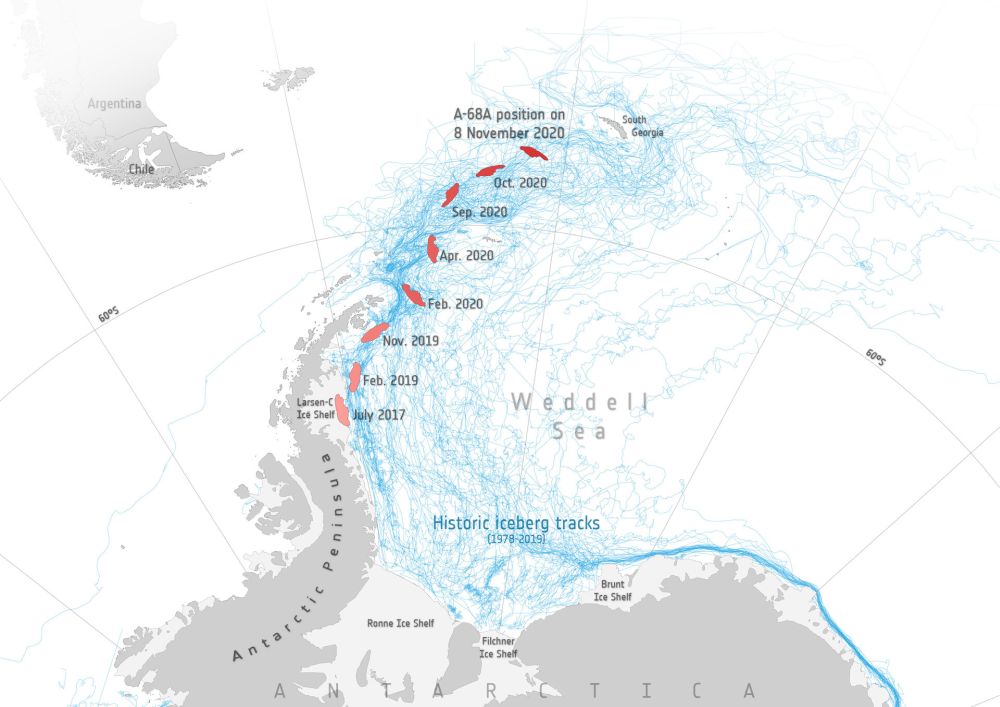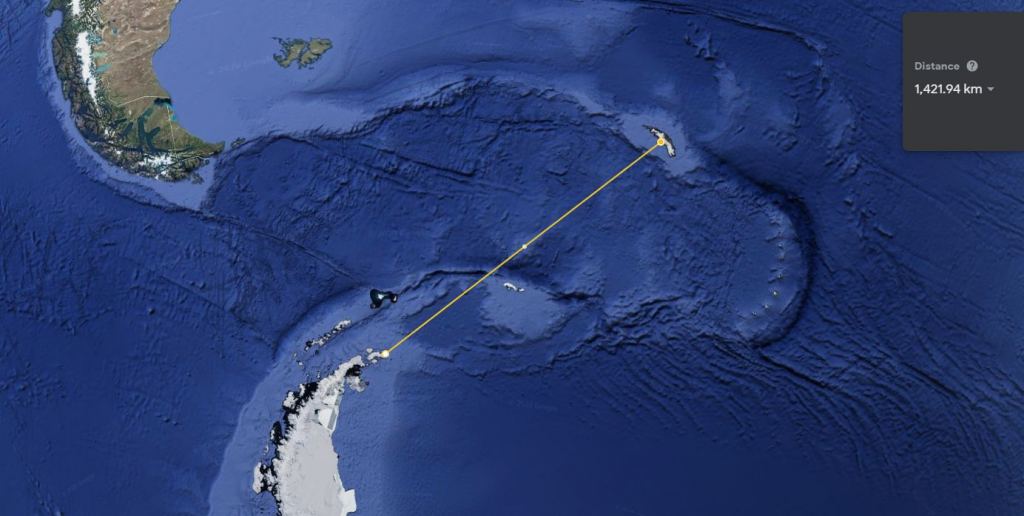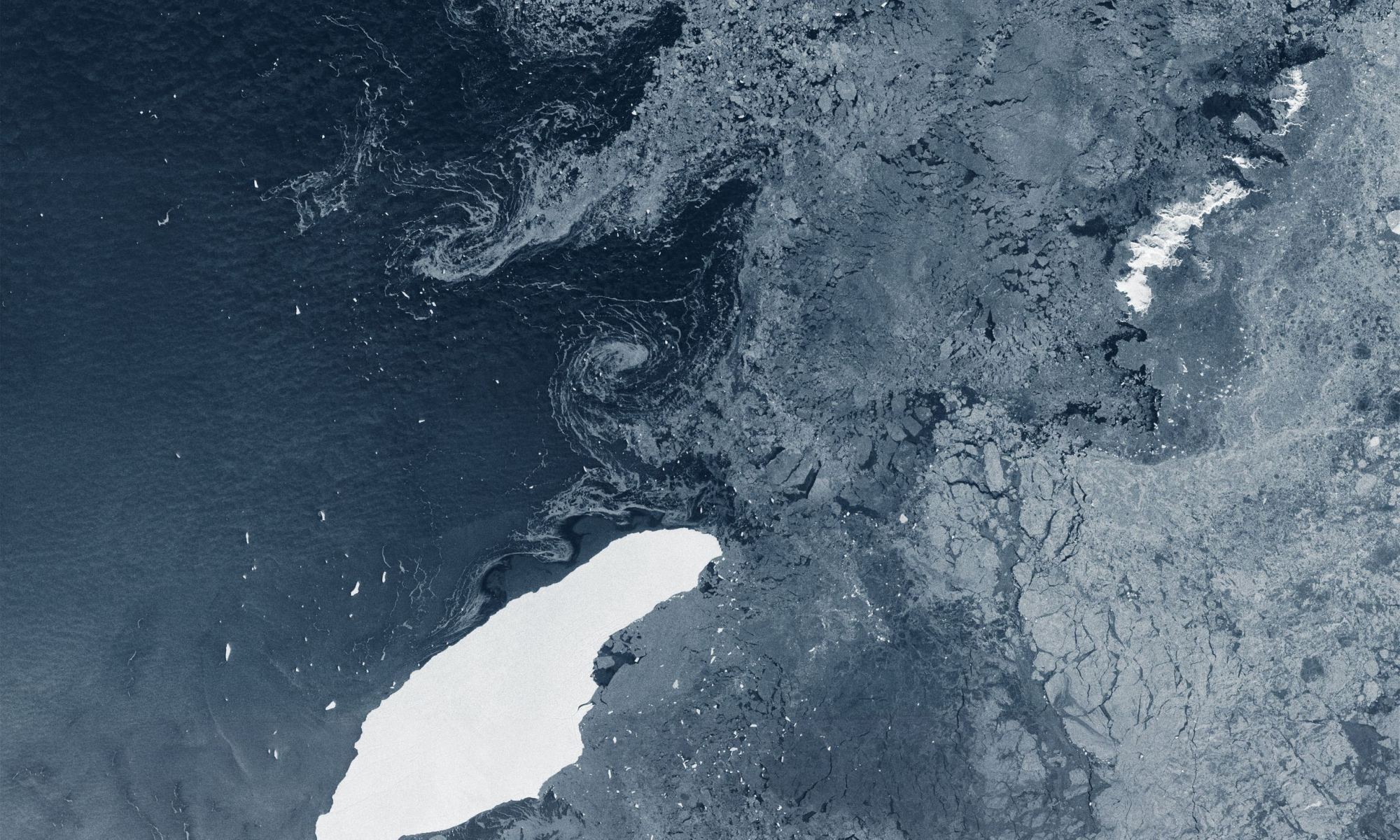A massive iceberg named A-68A is on a long journey through the seas near Antarctica. Though largely empty, those waters do host some islands, most notably South Georgia Island. In recent weeks satellite images showed the iceberg heading right for South Georgia.
That upcoming collision could have devastating consequences for wildlife that congregates on the island. But now, it looks like the collision might not happen.
A-68A’s story began back in 2017. At that time, a massive iceberg named A-68 broke off of the Larsen C ice shelf in Antarctica. It was so massive that it constituted about 12% of the ice shelf. It fractured a little, and the largest intact chunk is now called A-68A.
A-68A followed a well-trodden path for icebergs. It travelled up the Antarctica Peninsula then left land behind, heading roughly northeast. Not much lay in its path except South Georgia Island, about 1400 km (870 miles) away. It’s taken about three years, but now the iceberg is approaching the island.

In mid-November, it looked like A-68A was heading directly for South Georgia. The European Space Agency was watching with satellites, and they issued a press release warning of a possible collision. While the island is largely uninhabited, the consequences for wildlife could be bad, based on a previous collision.

In 1998 another iceberg collided with the shallow seas around the island, making it difficult for penguins and seals to feed their young by blocking access to their feeding grounds. In the time it took for parents to take a long detour to get to their feeding grounds, many seal pups and penguin chicks perished. Scientists are worried that it might happen again.
The problem with A-68A is not just the potential collision but the size of the iceberg itself. A-68 A is roughly the same size as the island it’s headed for. That means that if it grounds itself in the shallow waters near South Georgia Island, it could be stuck there for as long as 10 years. That’s not a good prospect for wildlife.
Satellite images from the ESA’s Copernicus Sentinel-1 show A-68A only 255 km (160 miles) from South Georgia on November 25th.
The above images show the iceberg slowly gyrating, and beginning to drift to the west. If it continues, it may miss the island.
There’s one other hopeful note in this potentially devastating story. Though A-68 A is massive, it’s not that deep. It may only draft about 200 meters (656 ft.) Even if it does head right for the island, it could pass right through the shallow waters around South Georgia without becoming lodged there.
Our satellites will keep us apprised.

